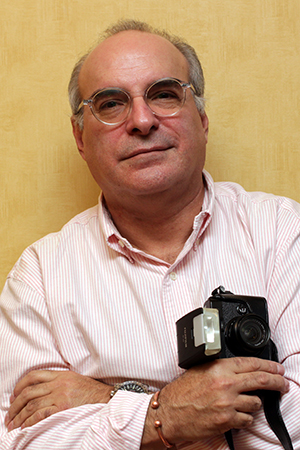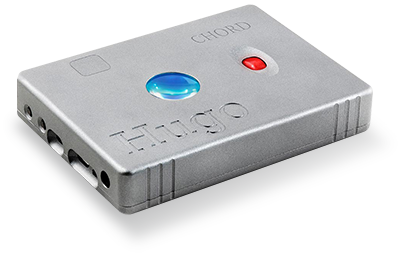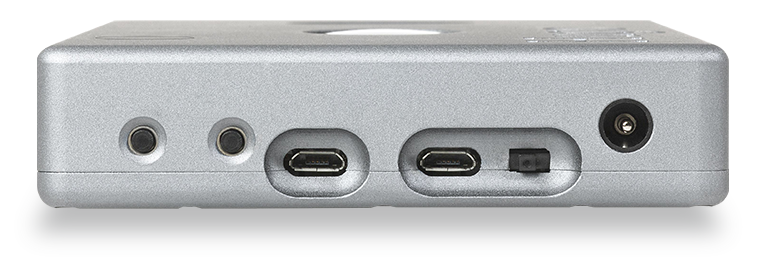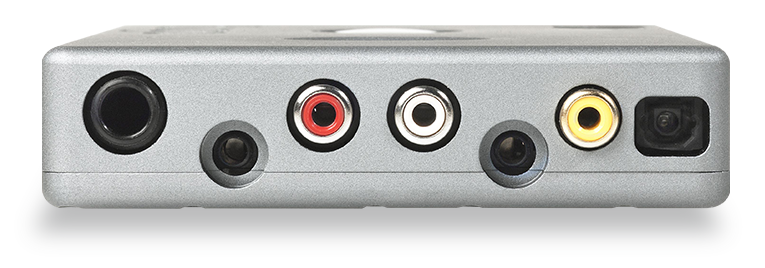
 For jaded old duffers such as I, few products set the heart aflutter. Curiosity? Yes. A willingness to call out mob hits on other reviewers to secure a scoop? Uh, I don't think so. But in-between are new items that burrow into one's subconscious, for whatever reason. In the case of Chord's Hugo, it was the corny name.
For jaded old duffers such as I, few products set the heart aflutter. Curiosity? Yes. A willingness to call out mob hits on other reviewers to secure a scoop? Uh, I don't think so. But in-between are new items that burrow into one's subconscious, for whatever reason. In the case of Chord's Hugo, it was the corny name.
Groan now if you hate bad puns: Chord, deliciously free of shame or embarrassment, saddled "the world's first reference-class portable DAC/headphone amp" with the name Hugo "because you can take Hugo wherever 'you-go'." Even Sheryl Lee Wilson would think twice about touching that one, and her puns are known throughout the industry. "Hugo" is close to unforgiveable, when you recall that they also have a line coolly called "Chordette" (also as in the group that sang "Mr. Sandman" back in '54).
But daffy name aside, it certainly caught my attention, as did its spec, its capabilities, and just about everything else, now that I've made the conscious leap to high-end music-in-transit. I fly around 20 times per year, with at least three or four of those journeys going beyond the three-hour duration that I consider to be the maximum tolerable without the aid of sedatives like melatonin. I should be ashamed of what I used in-flight: great headphones but with a "plain vanilla" iPod Classic.
As I've been working through a few headphones lately -- having auditioned at least ten pairs since January -- and I've acquired an Astell&Kern AK120 digital player, the addressing of absolute sound quality while on the move is mandatory. I have forced myself not to put up with "merely acceptable," as I did before due to my prioritizing of noise-cancellation over sonic merit.
Hugo is yet another item to challenge Virgin Atlantic's hand-luggage limit, along with a Nagra SD voice recorder, MacBook Air, camera du jour, and whatever Bluetooth speaker (Beats Pill, foxL, Geneva, etc.) I grab first -- plus any chargers if they don't take juice via USB. Hugo weighs nearly 12 ounces without its "wall wart," which you must schlep along, as it doesn't charge via USB, although it runs for 14 hours on a full charge.
 All by-the-by: the sound is so flipping gorgeous for a portable device -- and for an in-house amp-plus-DAC -- that its UK price of £1400 (and which I suspect translates into $2000 on the other side of the pond) no longer seems scary in that context. It's so comprehensively equipped that it ought not be categorized alongside other (admittedly wonderful) portable DACs or headphone amps that service only one source or a single pair of cans. This is a full-scale component in a palm-sized case.
All by-the-by: the sound is so flipping gorgeous for a portable device -- and for an in-house amp-plus-DAC -- that its UK price of £1400 (and which I suspect translates into $2000 on the other side of the pond) no longer seems scary in that context. It's so comprehensively equipped that it ought not be categorized alongside other (admittedly wonderful) portable DACs or headphone amps that service only one source or a single pair of cans. This is a full-scale component in a palm-sized case.
It's based on the same "grown up" FPGA DAC technology that Chord uses in its non-portable digital hardware, and no capabilities have been deactivated to make this thing more compact. According to Chord, Hugo has facilities for "five digital inputs including A2DP aptX Bluetooth, plus advanced 384kHz PCM and DSD128 playback for high-resolution DXD (Digital eXtreme Definition) music files."
That's a lot of inputs by most measures, and I found it a perfect tonic for those high-enders who have to downsize their in-house systems for whatever reason. This really is high-end sound in a half-pint glass. Better yet, for those audiophiles who still have friends, it can feed three pairs of headphones (one with a 1/4" jack and two with 3.5mm plugs), while there are line-level outputs for marrying this to a static system.
Chord has ensured that Hugo has a lengthy, future-proof lifespan because it will process sample rates ranging from 44.1kHz to 384kHz (PCM). It has two advanced USB inputs, one driverless for legacy USB devices and one asynchronous high-definition USB port for operation up to the aforementioned 384kHz. Other digital inputs will accept coaxial and optical feeds, so this really does offer wide scope.
I was overjoyed to find that the A2DP Bluetooth worked swiftly and seamlessly with the Astell&Kern, any nervousness being a throwback to my early recollections of Bluetooth, four-digit codes, and other miseries. This was "music in 30 seconds," and it sounded fabulous through B&W P3s. Chord explains that Hugo uses a "custom-made module with the aptX codec to feed a digital signal directly into the DAC circuitry, so even without cables, high-quality music can still be enjoyed."

With wired connections, I was delighted to find that Hugo's resolution is so high that I could hear actual differences in TosLink cables. And all three headphone outputs were ample for whatever I connected, including three other B&Ws, the Musical Fidelity MF100s, Monster Inspirations, Focals, Sennheisers, Grados -- this thing is even good enough to use as a reference for those who assess headphones for a living. Chord claims 110dB SPL into a 300-ohm headphone load. Effin' loud, says I.
Hugo processes 384kHz PCM files and DSD128 data using the latest DSD-over-PCM standard (DoP) and a bunch of others, while my MacBook Air never sounded better: open, detailed, transparent with a feed from Fidelia, and using some HDtracks high-resolution downloads. As my only PC is running the now-unsupported XP, I didn't bother trying it, but Chord says that Hugo employs their proprietary driver software, "removing the restrictions of current operating system audio playback."

Chord stresses that Hugo "only takes signal data; therefore, it is fully compatible with all iPhone, iPad and Android devices. Further features include an advanced reference-grade digital volume control that does not lose bits." Oh, and the rotary control changes color according to the levels -- nice.
For an object to fondle, Hugo is right up there with the yummiest. Its hard-anodized, machined aircraft-grade aluminum case measures 3 5/8" x 5 3/4", finished in bright silver, so it's just on the right side of pocketable. As Chord users now expect, it features the company's trademark "porthole" so you can look inside.
And you'll need to look inside because that's where Chord placed the tell-tales to identify the state of the battery's charge, the selected source, and the settings for its own spatial circuitry -- the latter being a must-have in the headphone era. My only gripe is that you have to memorize the controls, lighting codes, and inputs because Chord neither printed nor engraved any legends on this device, yet the underside could easily contain a "map" of the various functions.
Maybe there's another reason behind that name: "To the Victor goes the spoils." But that presupposes a literate world. Guess the retailers could relate Hugo to that blockbuster Les Miserables. If so, then I would be willing to bet that more than one putz would argue, "But that's Hugh Jackman, not Hugo." Err, hugo figure.
. . . Ken Kessler
kenk@soundstagenetwork.com






















